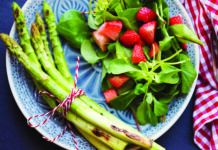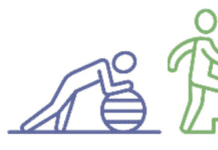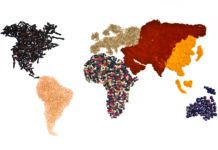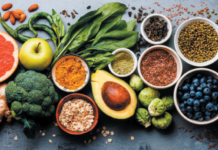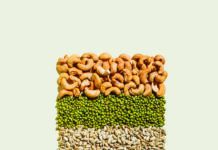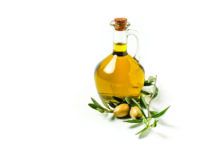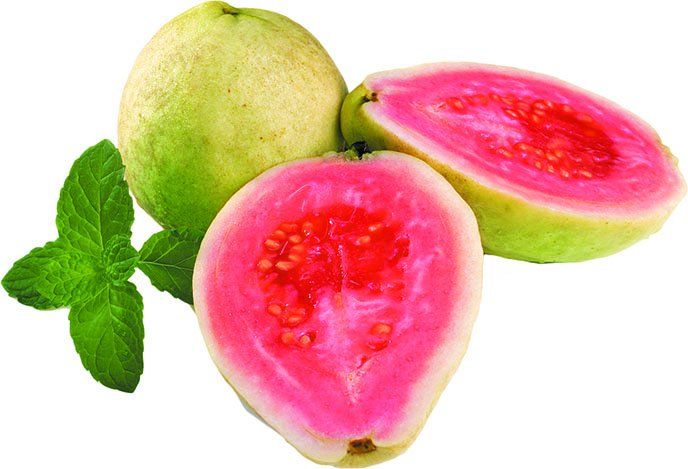If your budget isn’t up to a tropical vacation this summer, you can at least take your tastebuds to the tropics with some nutrition-packed choices in the fruit section. Tropical fruits such as guava, kiwifruit, mango and papaya are low-calorie, nutrient-dense options for adding variety to your menus. Although most tropical fruits are now available year-round, several of these are at their peak (and also most affordable) in summer or early fall.
“All of these tropical fruits deliver at least your Daily Value (DV) of vitamin C in a single cup,” points out Diane L. McKay, PhD, an assistant professor at Tufts’ Friedman School and a scientist in the HNRCA Antioxidants Research Laboratory. “Guava, mango and papaya are also high in beta-carotene, and guava is one of the best sources of lycopene. They also contain useful amounts of magnesium, potassium and fiber, as well as healthy phytochemicals.”
Image: Thinkstock
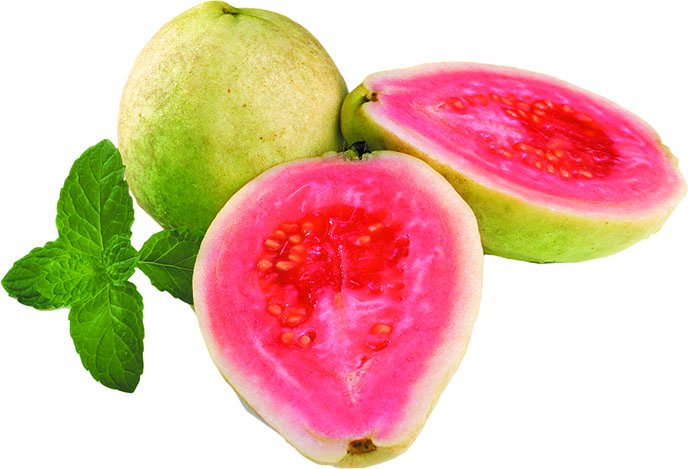

GUAVA: The fruit of an evergreen shrub or small tree that probably originated in Central America, guava will ripen year-round in warmer growing areas. Florida fruit are at their peak from August through October and in February-March.
One cup of guava pieces provides more than six times the DV of vitamin C, with the highest concentrations found in the flesh just under the rind. Vitamin C is required to make collagen, the body’s main structural protein; it serves as an antioxidant, protecting cells from the damage caused by free radicals, and helps the immune system work properly.
Guava is also the highest of these tropical fruits in potassium, with nearly 20% of the DV per cup—more than a comparable amount of famously potassium-rich banana. Potassium can help control blood pressure and regulate your heart rate; consuming more potassium has been linked with a lower stroke risk.
The pink color of guavas is a clue that they are one of the few fruits high in lycopene, an antioxidant carotenoid that also gives tomatoes their red color. By weight, guavas contain nearly twice the lycopene of tomatoes. Lycopene has been associated with lower stroke risk, reduced markers of inflammation, and improved cholesterol and triglyceride levels, and may help protect against prostate cancer.
Image: Thinkstock
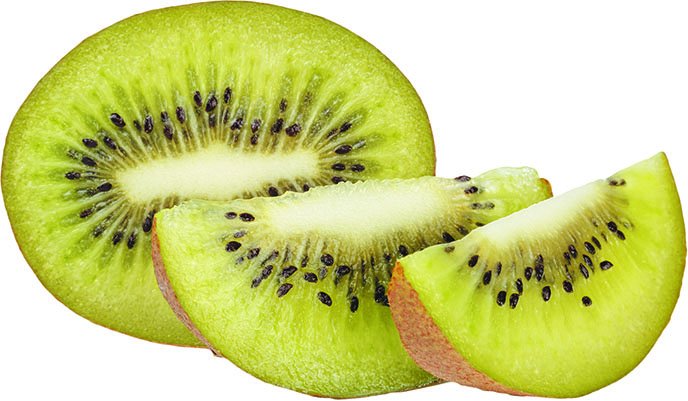

KIWIFRUIT: Like the people of New Zealand, known as “kiwis,” the kiwifruit is named for the flightless bird native to that country. Originally grown in China and known as “Chinese gooseberries,” this fruit came to New Zealand with missionaries in the early 20th century and was renamed upon introduction to the US in the 1960s. Kiwifruit from New Zealand can be found on supermarket shelves from June through October; fruit from California is available the rest of the year.
The bright green flesh, speckled with tiny black seeds, contains more vitamin C per cup than an orange. Kiwifruit has been studied for its antioxidant and phytochemical properties, which may protect against respiratory conditions. In one study, volunteers who ate two or three kiwifruit a day for four weeks showed an 18% improvement in platelet aggregation response, an indicator of risk for blood clots, and a 15% reduction in triglyceride levels.
Consume kiwifruit soon after cutting and add to fruit salads only right before serving, as enzymes released by slicing cause it and nearby fruits to soften. Kiwifruit contain oxalates, so people at risk for kidney stones or gallstones may want to moderate their intake.
MANGO: Among the world’s most widely consumed fruits, many varieties of mangos are grown, making them available year-round. Summer sees the arrival of Keitt mangos, popular in Asian cuisine, and the second crop of Kent mangos; Francis mangos from Haiti are still at their peak. Mangos are drupes, like dates, olives and coconuts, with an outer fleshy part that surrounds a pit with a seed inside.
The golden yellow inside reveals that mangos are high in vitamin A, mostly in the form of beta-carotene; diets high in beta-carotene have been associated with a lower risk of certain cancers. Mangos are also a source of zeaxanthin, a carotenoid compound associated with eye health.
Unripe mangos will continue to ripen on the counter; lightly squeeze to test ripeness rather than relying on color. To serve, slice close and parallel to the seed on either side to make two halves. With the skin side down, cut a checkerboard pattern in the flesh of each half, then use a spoon or knife to pop off the pieces.
Image: Thinkstock
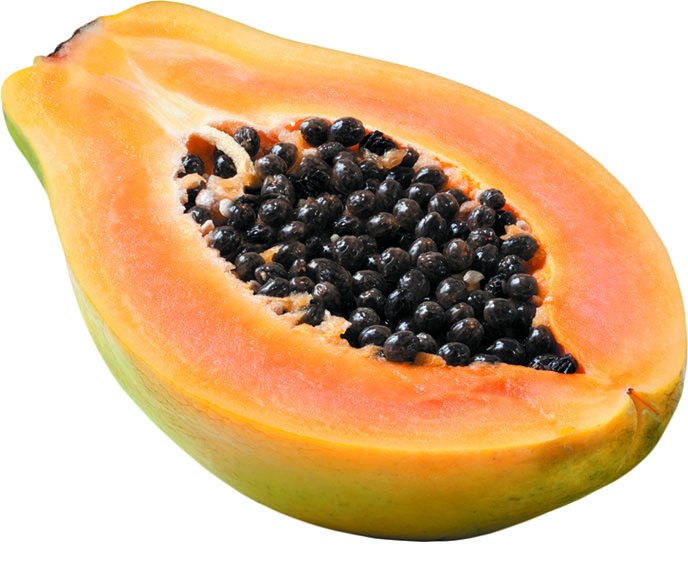

PAPAYA: Native to Central America but now grown throughout the tropics, papayas are at their peak from early summer into fall. Most supermarket papayas come from Hawaii, but you may also see the much larger, less intensely flavored Mexican variety. Partially ripe fruit will continue to ripen on the counter (you can speed the process by placing near an apple or banana); ripe papayas will keep a day or two in the refrigerator.
Almost as rich in vitamin A as mangos, papayas are also a source of lycopene. One study found that men who drank green tea and also consumed tropical fruits, including papayas and guavas, were at lower risk of prostate cancer.
Papayas are unusual in containing an enzyme called papain that helps digest proteins and can be used to tenderize meat; papain may also have anti-inflammatory effects. Concentrations are highest in green papayas.



